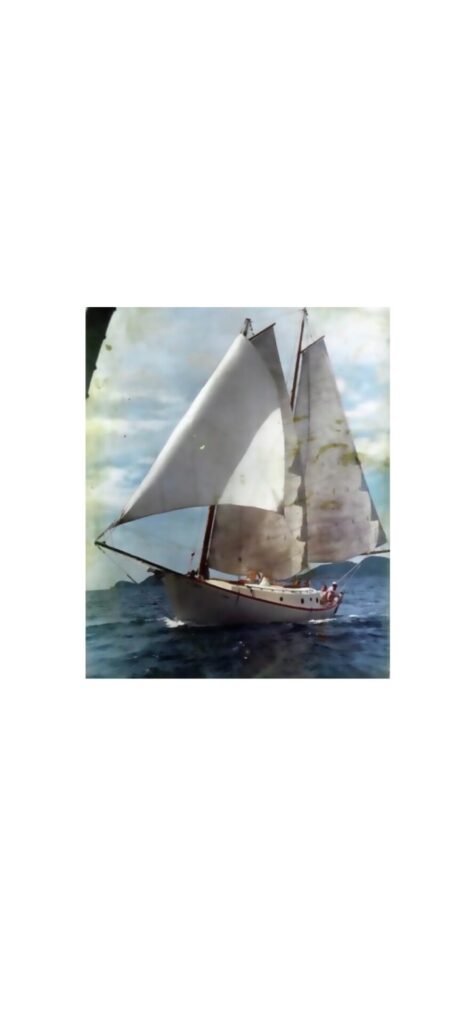By Mike Metcalfe
This past week has been a nonstop balance of work—both on the boat and on my businesses. Between managing Triangle Design Group (TDG) and Portland Pudgy (PP) and tackling major restoration projects on the last remaining cowhorn schooner, there hasn’t been much downtime.
Only six of these schooners were ever built in St. John, and over the years, hurricanes and time have taken their toll—leaving just this one. Restoring her is a challenge, but I feel it is a project worth taking on.
The Virgin Islands have long been home to a rich tradition of boatbuilding, where craftsmen shaped vessels suited for the challenging yet beautiful waters of the Caribbean. Among these, the cowhorn schooners stand out as a unique chapter in maritime history. Built in Coral Bay, St. John, in the late 1970s and early 1980s, only six of these boats were ever made, and today, only one remains—the very schooner I am now restoring.
This is the story of how these boats came to be, what made them special, and my efforts to bring the last surviving cowhorn schooner back to life.
The Birth of the Cowhorn Schooners
In the late 1970s, a group of talented boatbuilders and sailors in Coral Bay set out to create a new class of schooners, inspired by traditional Block Island Cowhorn fishing boats. Led by Augie Hollen, the project used a single fiberglass mold to build six nearly identical vessels, each measuring around 32 feet on deck.
The builders included Danny Linkey, Paul Hellings, Julian Putley, and others, who worked together to shape these seaworthy boats. The construction process combined fiberglass hulls with wooden deck structures, making them strong yet relatively lightweight compared to traditional wooden schooners.
Here’s a rare historical photo showing all six cowhorn schooners together:
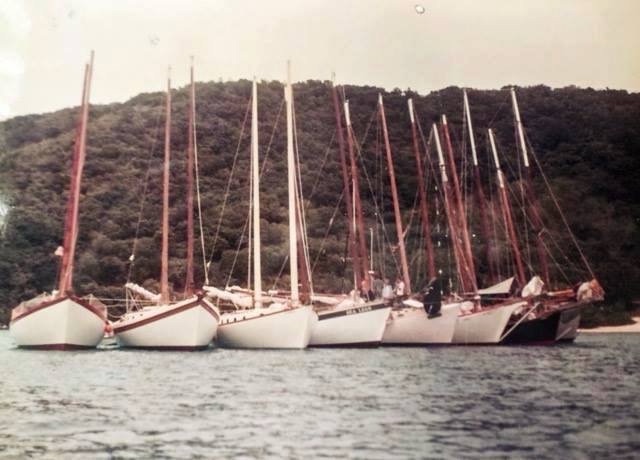
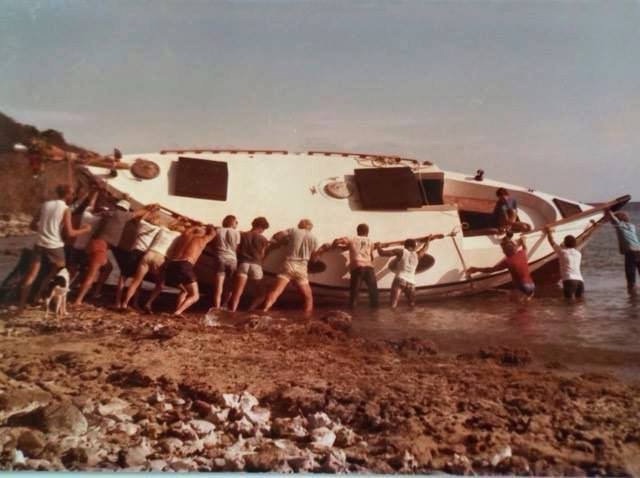
Each boat was a true sailing workhorse, built to handle Caribbean trade winds with their twin-masted schooner rig, boomkins, and high freeboard for excellent stability. They quickly became favorites among local sailors, participating in regattas and serving as liveaboard cruising boats.
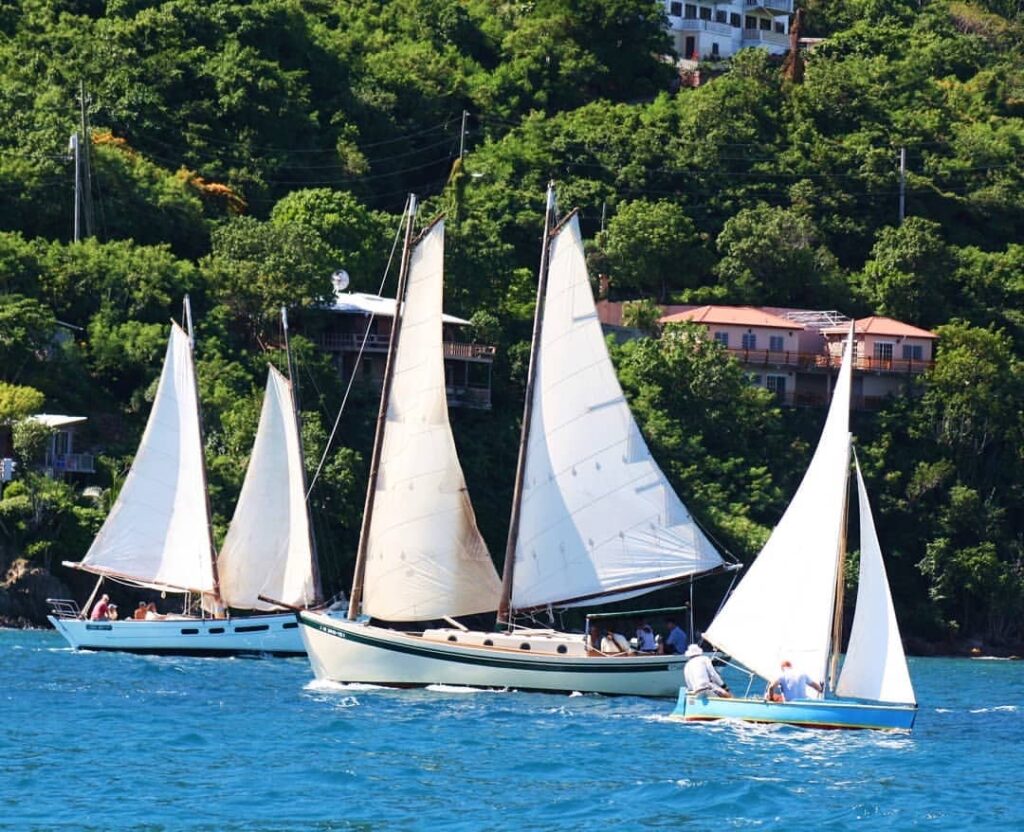
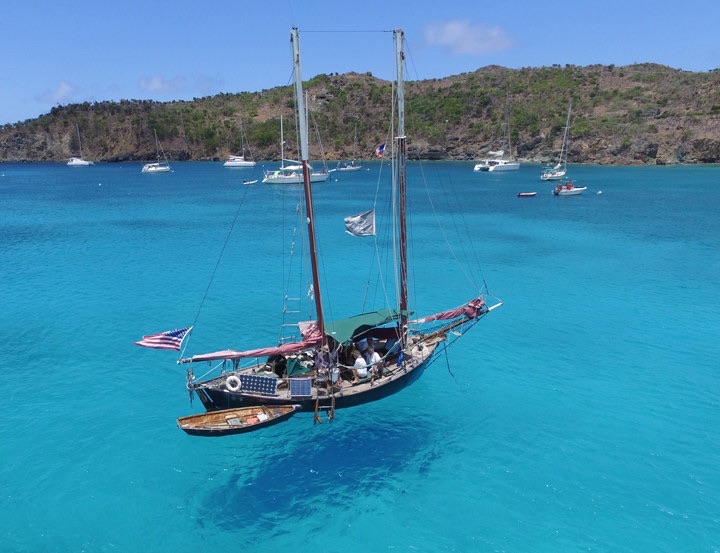
But time, hurricanes, and the wear of the sea took their toll. Over the decades, five of these boats were lost, leaving only one survivor—my cowhorn schooner now named PT73, but previously Rose and originally Joshua D.
Many other photos feature the Cowhorn schooners plying the waters of Coral Bay and the USVI, some even went much farther!
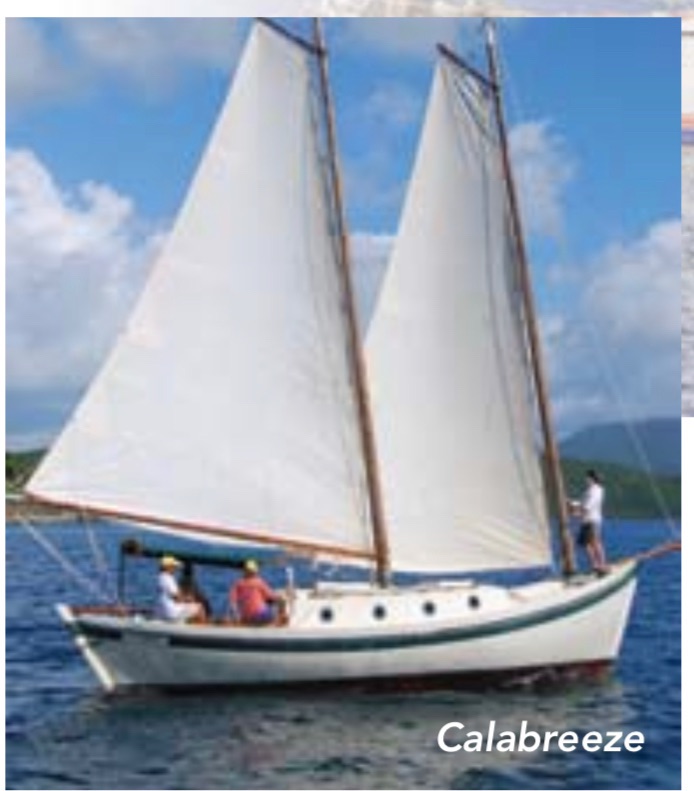
The Last of Its Kind: My Restoration Journey
I became the caretaker of the last remaining cowhorn schooner knowing that it would be a labor of love to bring her back to life. Like her sister ships, she had seen decades of Caribbean weather, and the years had taken their toll.
Removing Rot & Rebuilding the Deck and cockpit
The first major challenge was repairing the foredeck, which had suffered from water intrusion and rot over the years. Here’s what it looked like as I began cutting away the damaged wood:
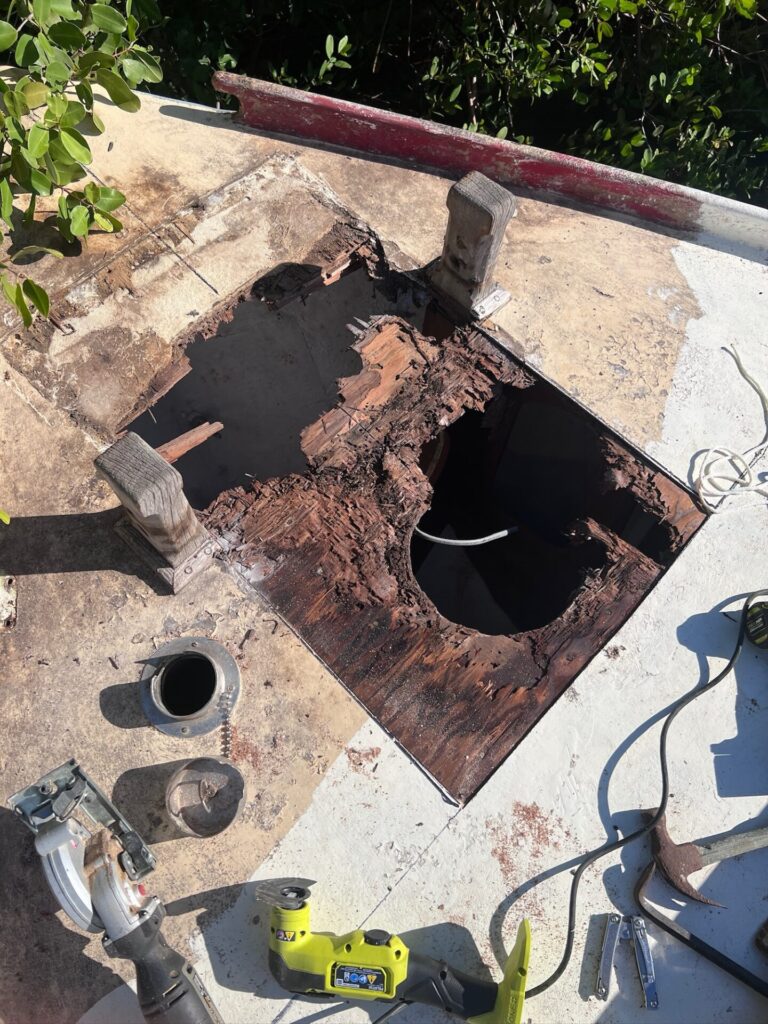
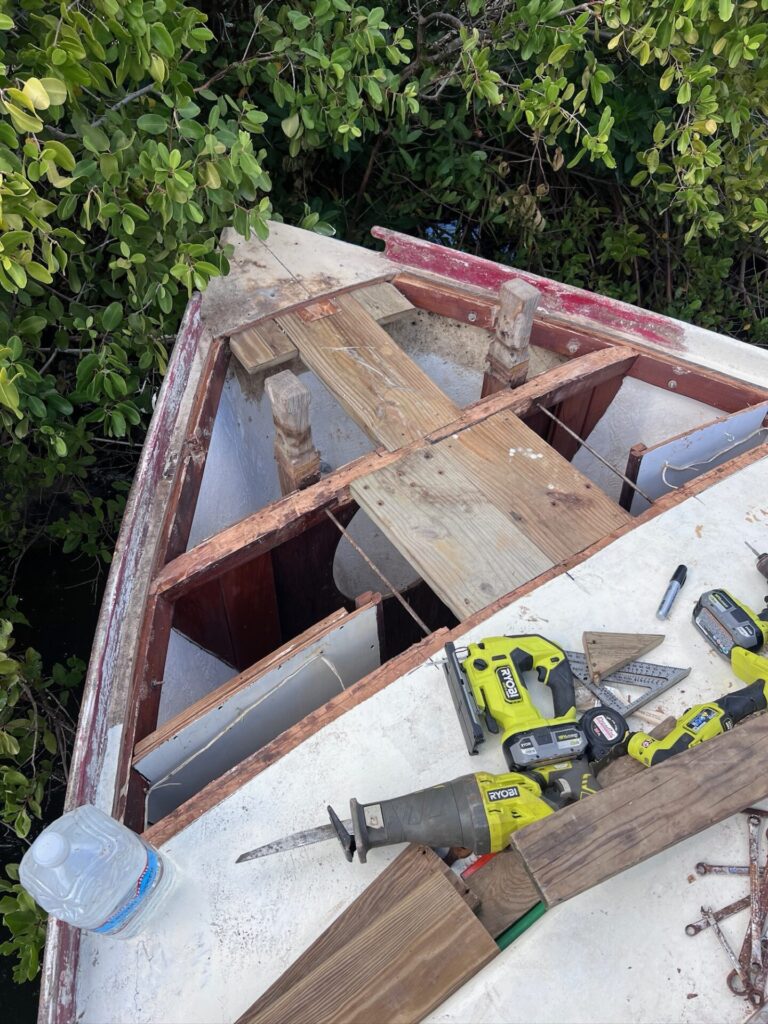
With the rotten sections removed, I rebuilt the foredeck using marine plywood and fiberglass, ensuring it would be watertight and ready for the rigging to be reinstalled.
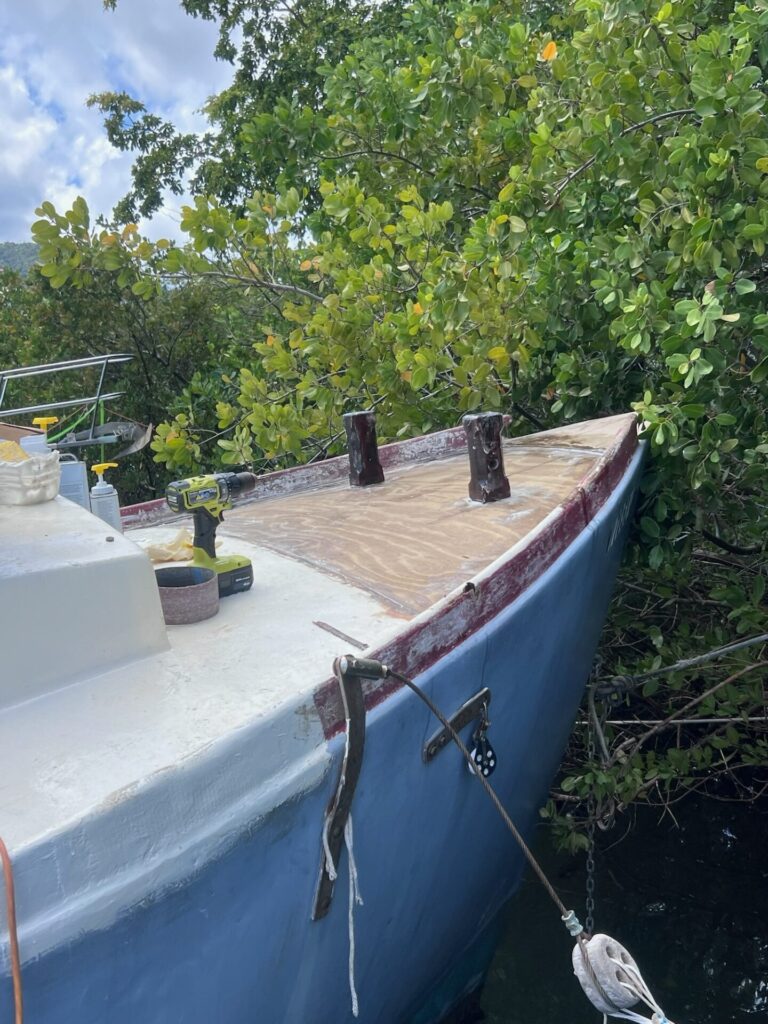
This week I cut the foremast hole, glassed the foredeck and started on the cockpit. The tub of epoxy spilled at my feet so it was a terrible sweaty slippery mess!
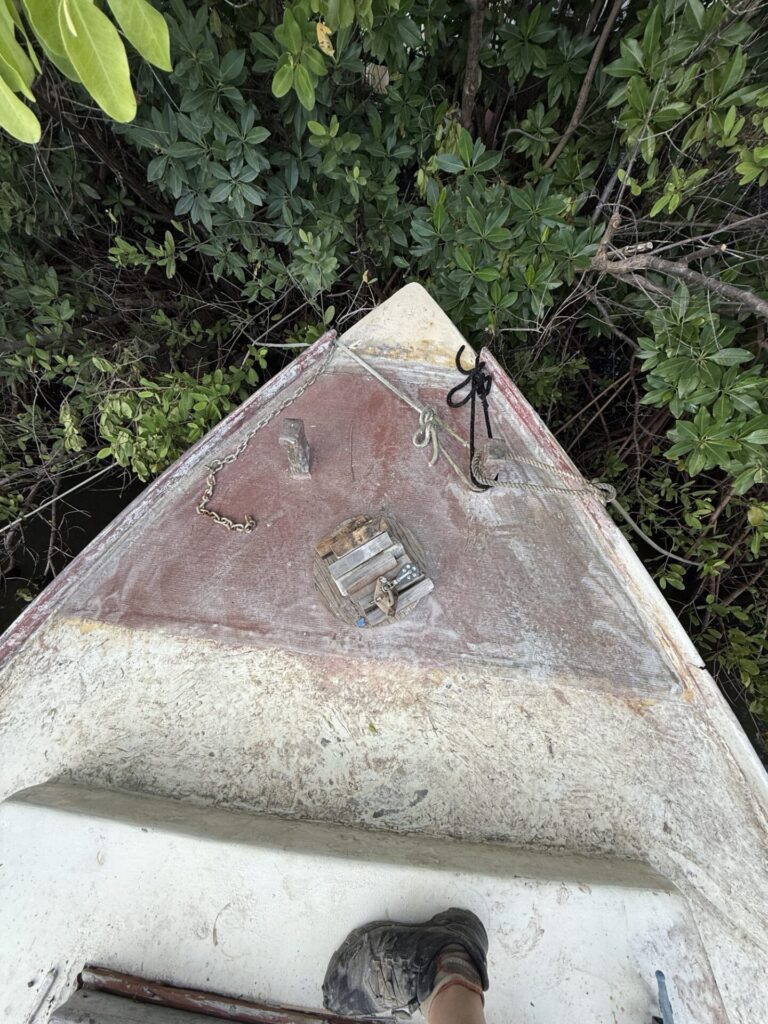
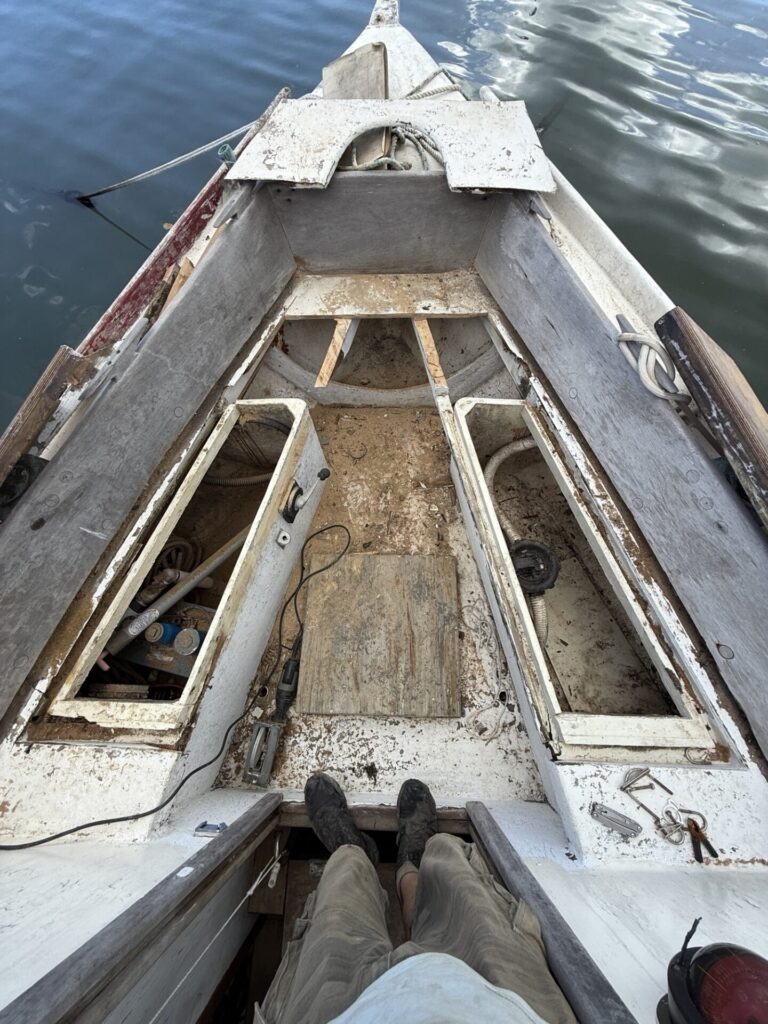
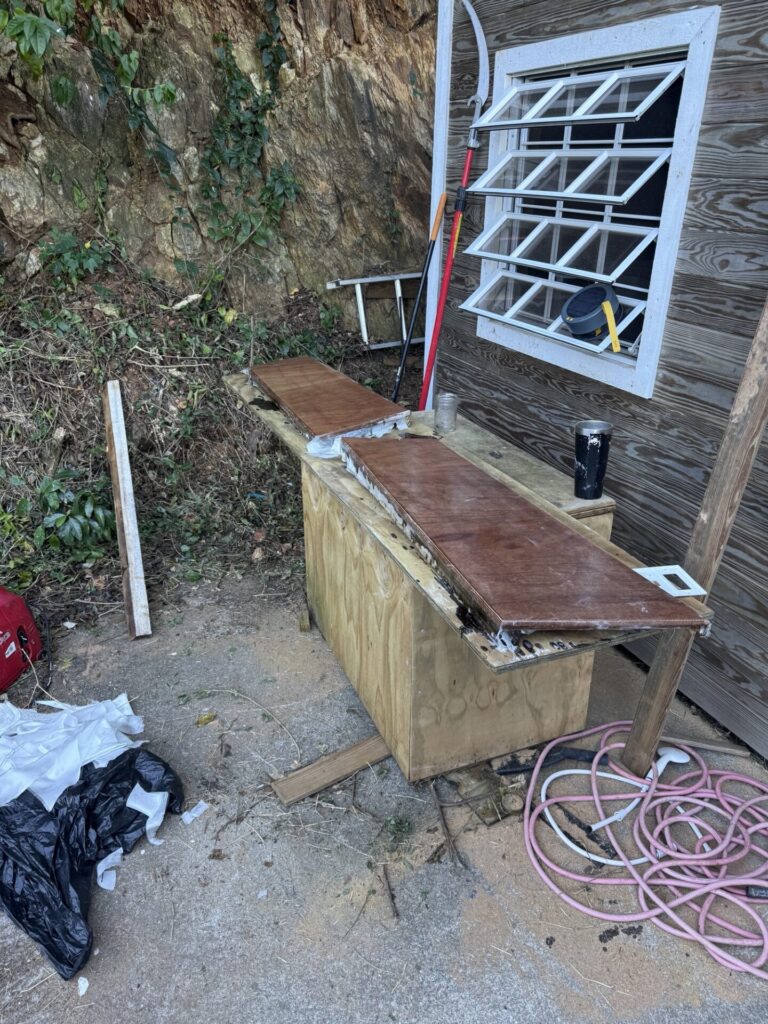
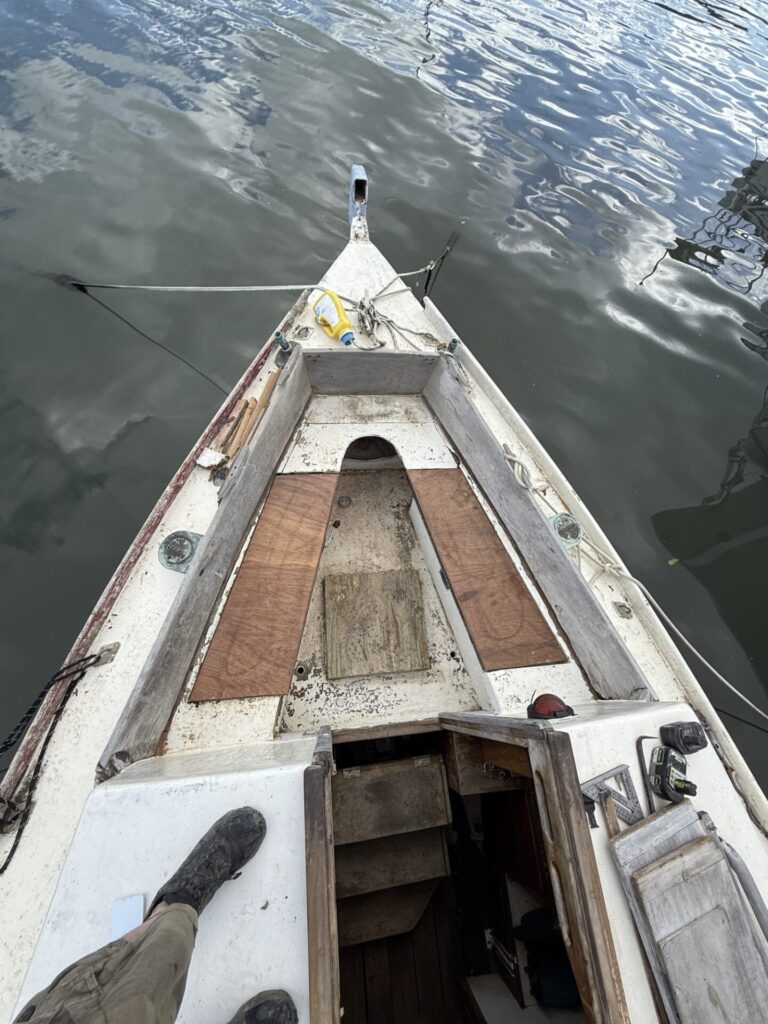
I am awestruck by how these folks pulled together and built these boats in the heat and extremely challenging conditions here in Coral Bay. Just simple repairs like these are very difficult due to the lack of local resources and difficult weather. Its exhausting!
Replacing the Masts
One of the biggest setbacks was the loss of the original wooden masts, which had become infested with termites. Last year, I had to cut them down using two chainsaws at the same time before dropping them into the water at Coral Bay Creek.
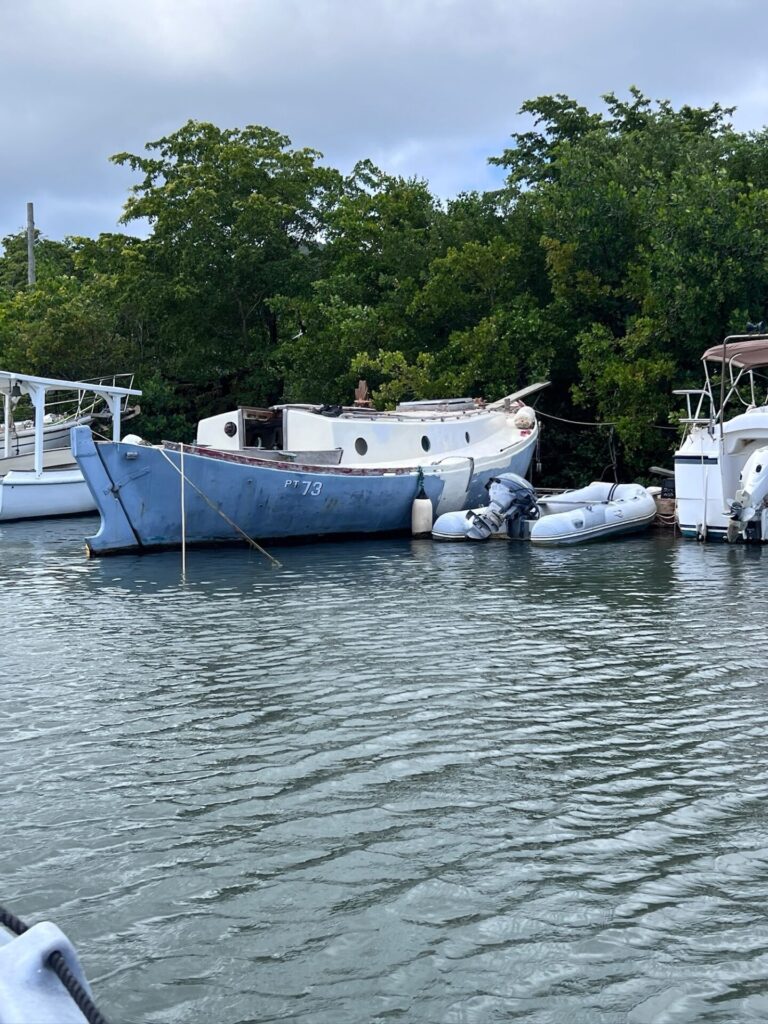
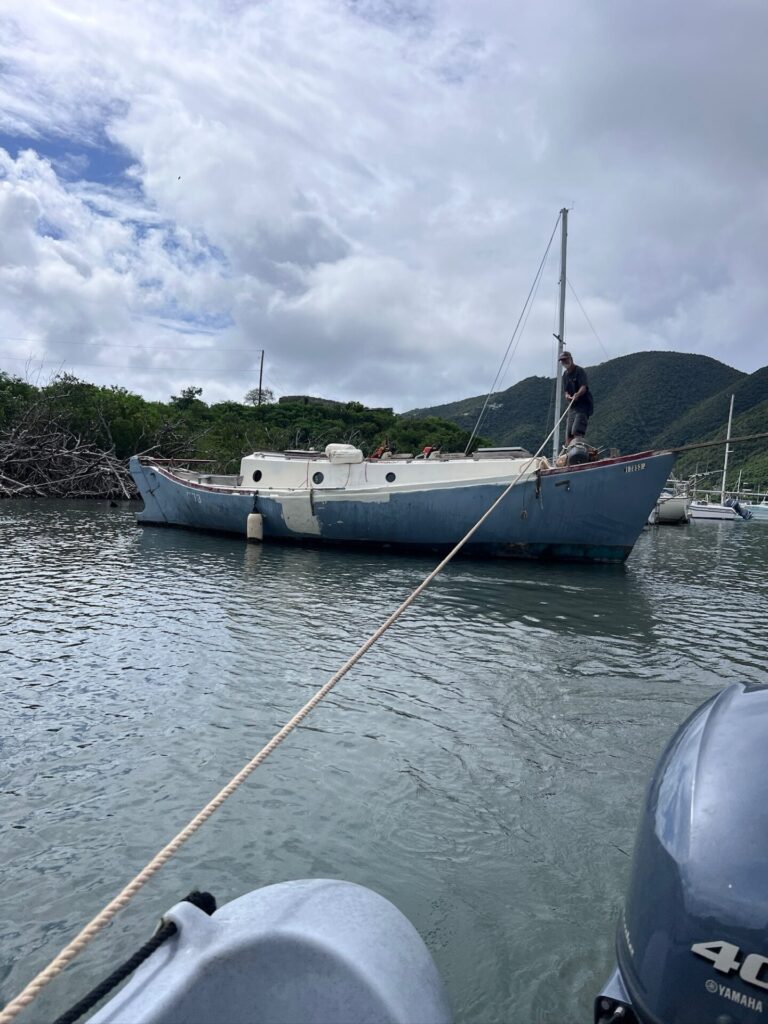
To replace them, I sourced two 40-foot aluminum light poles, which I had shipped down in a container along with my house kit. The plan is to replicate the original wooden masts as closely as possible, ensuring that the schooner retains her authentic look while benefiting from the durability of aluminum.
Restoring the Interior
Despite the years of exposure, the interior woodwork of the schooner remains beautifully intact. The mahogany trim, wooden cabinets, and classic ship’s bunks give the cabin a timeless, seafaring feel. Some minor refinishing is needed, but the heart of the boat’s craftsmanship is still there.
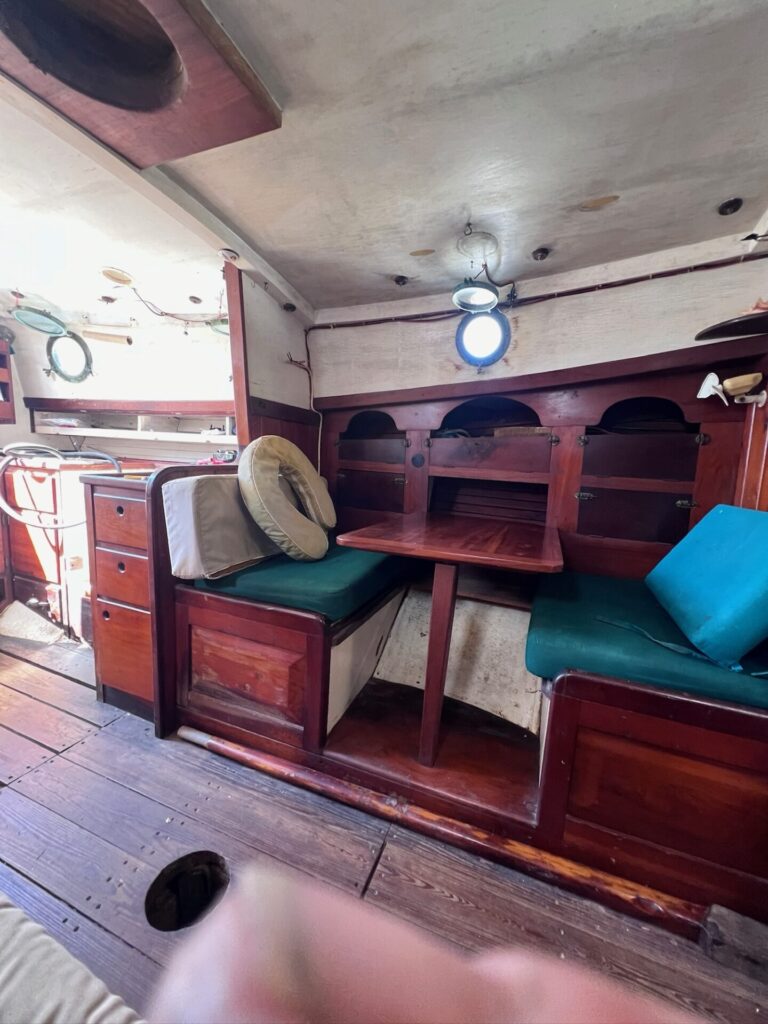
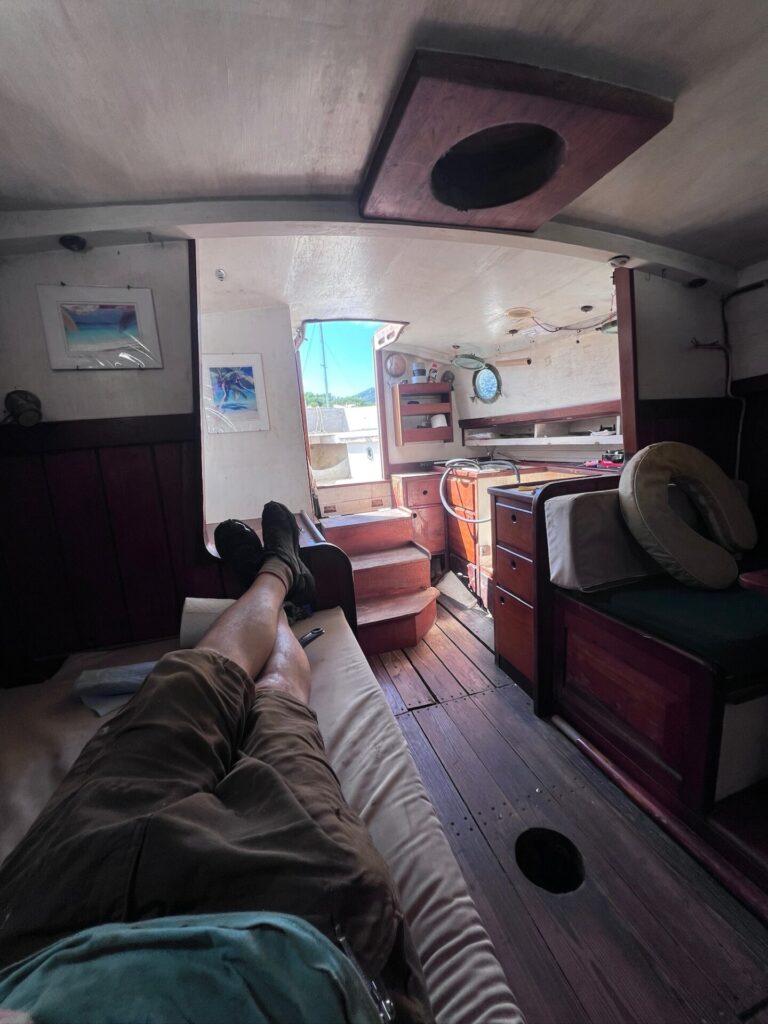
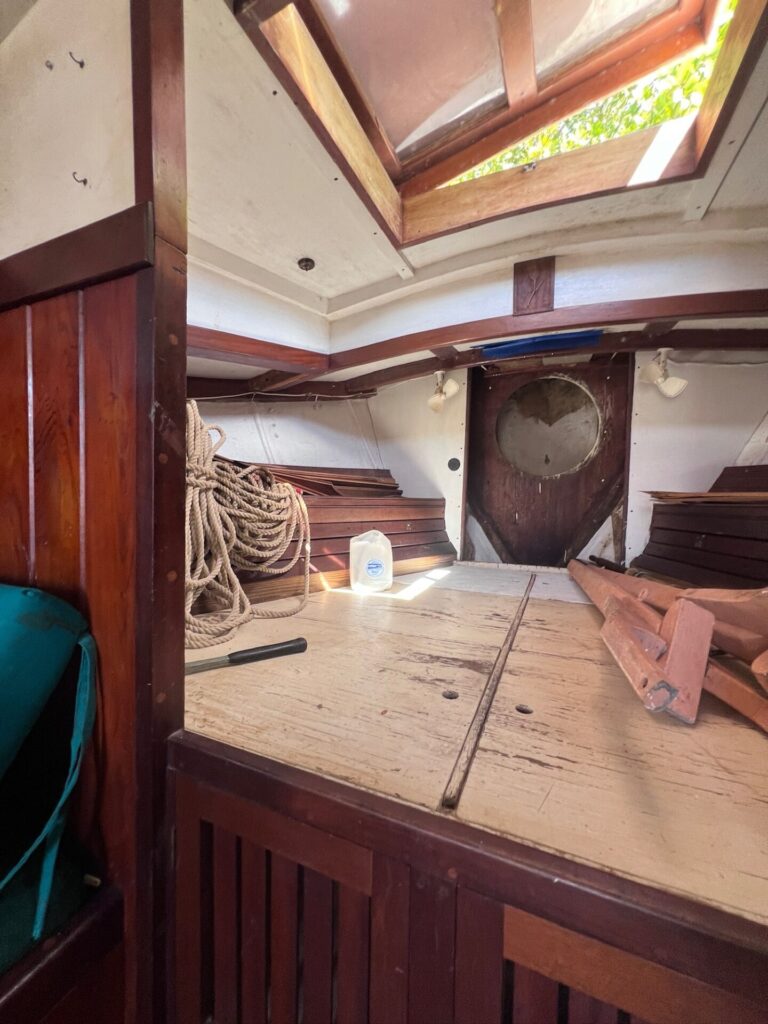
Why the Portland Pudgy Complements This Restoration
While working on this restoration, I’ve also been traveling the islands of St Thomas and St John, showcasing the Portland Pudgy dinghy—a modern classic that, like this schooner, is built for safety, versatility, and adventure.
During my time in the Virgin Islands, I’ve been selling Portland Pudgy boats, dropping off brochures, and visiting yacht clubs to spread the word. One of these boats found a new home overlooking St. Thomas Yacht Club thanks to a Facebook ad.
I have found that the Pudgy is virtually unknown in these parts, and it encourages me to continue to increase awareness and try to displace the large number of deflated inflatable boats that are all over the place.
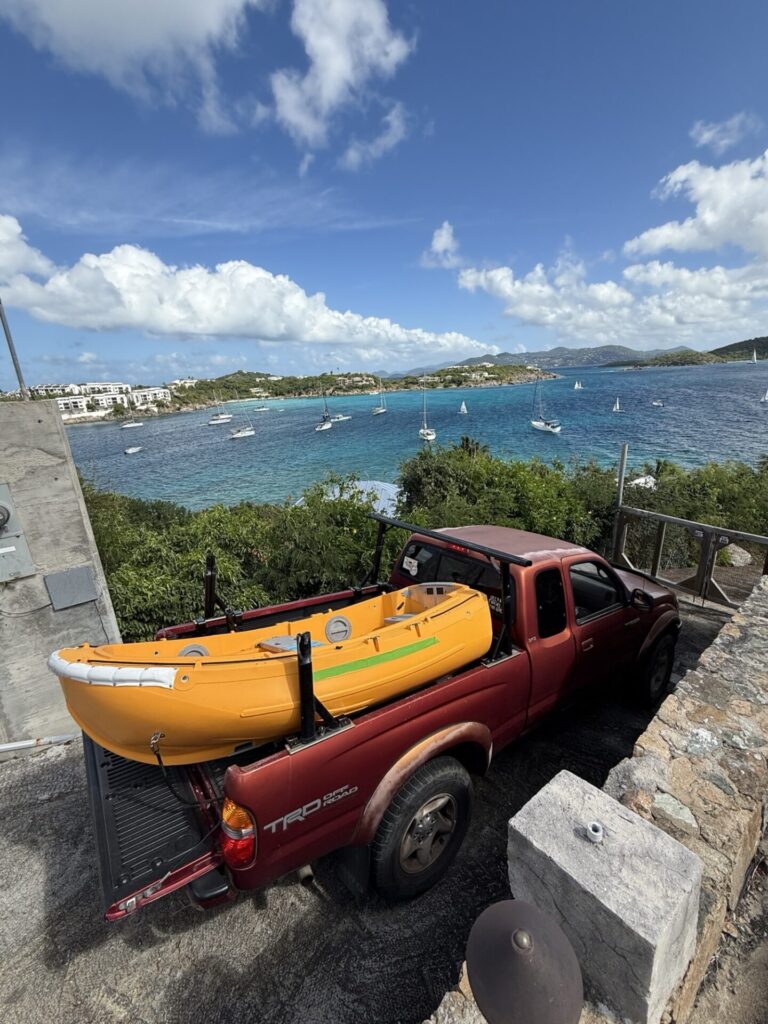
The Pudgy is more than just a dinghy—it’s a lifeboat, rowboat, motorboat, and sailboat all in one. Like the cowhorn schooner, it is designed to handle serious offshore conditions while remaining incredibly practical.
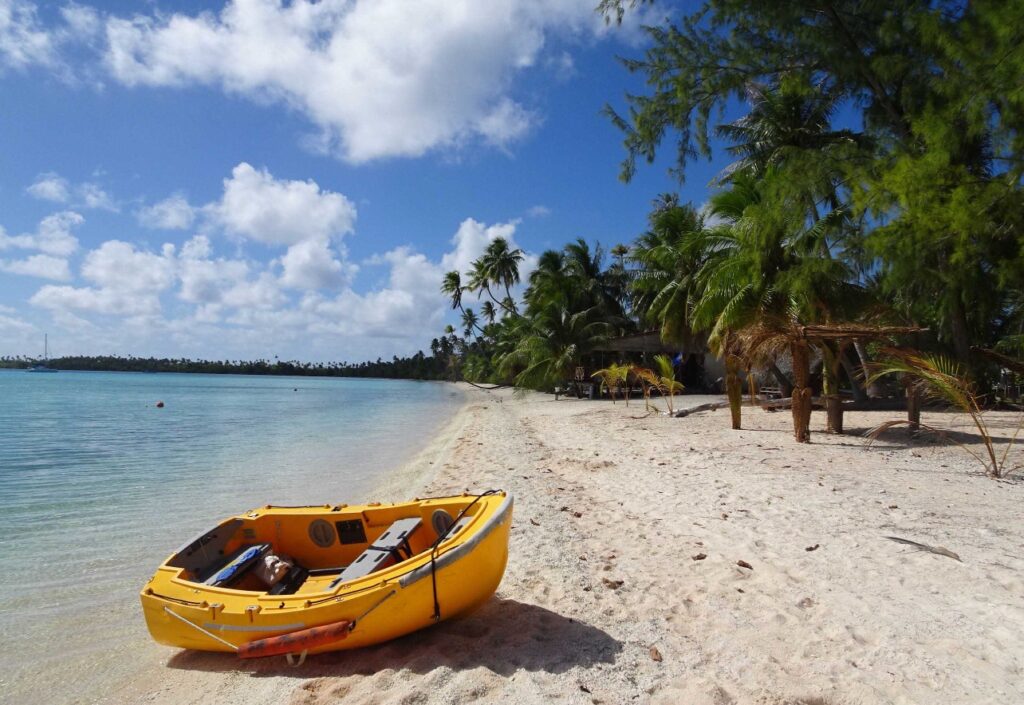
Honoring the Legacy & Looking to the Future
This cowhorn schooner is more than just a boat—it’s a direct link to the past, a reminder of the ingenuity of Coral Bay’s boatbuilders, and a testament to the resilience of traditional sailing vessels.
With every piece of fiberglass laid, every piece of rigging adjusted, and every coat of paint applied, I’m not just restoring a boat—I’m preserving a part of Caribbean maritime history.
My goal is to get her back under sail, just as she was meant to be. One day soon, I hope to see her gliding through the waters of the Virgin Islands once again, with her schooner sails full and her history alive on the wind.
For those who love classic boats, maritime history, or just a good restoration story, I invite you to follow along. Feel free to reach out if you’re in the area and want to see the restoration in progress—or if you’re interested in a Portland Pudgy to complement your own adventures.
Fair winds and following seas,
Mike Metcalfe
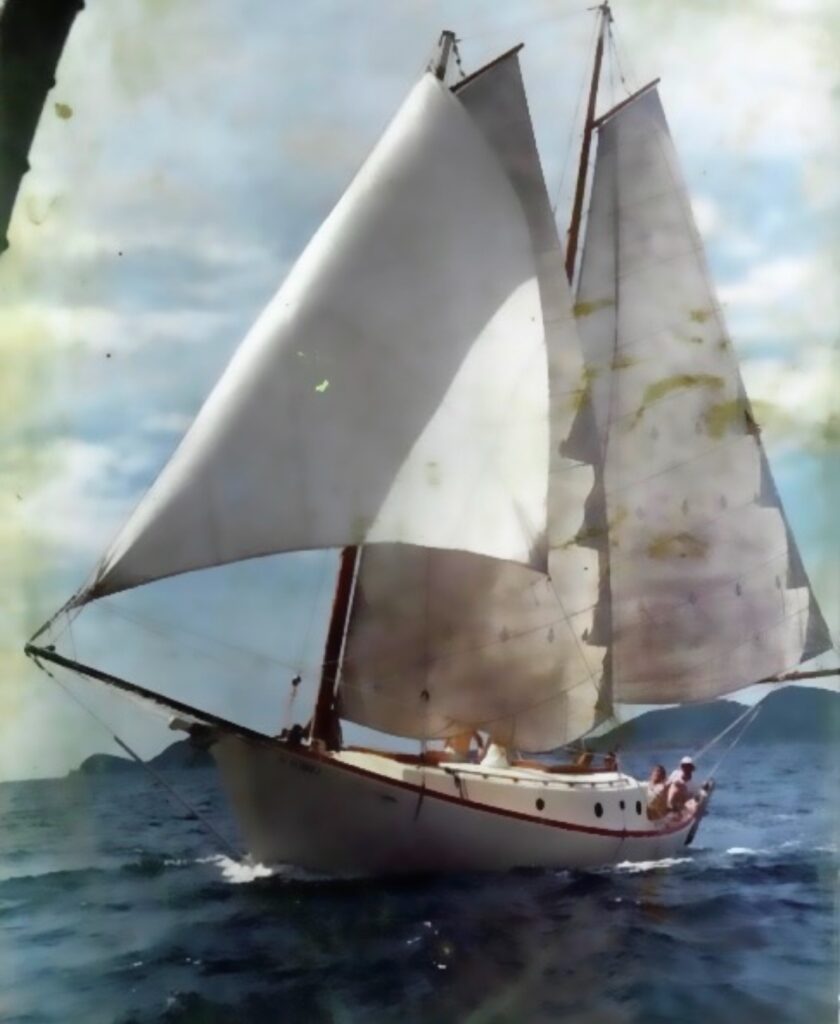
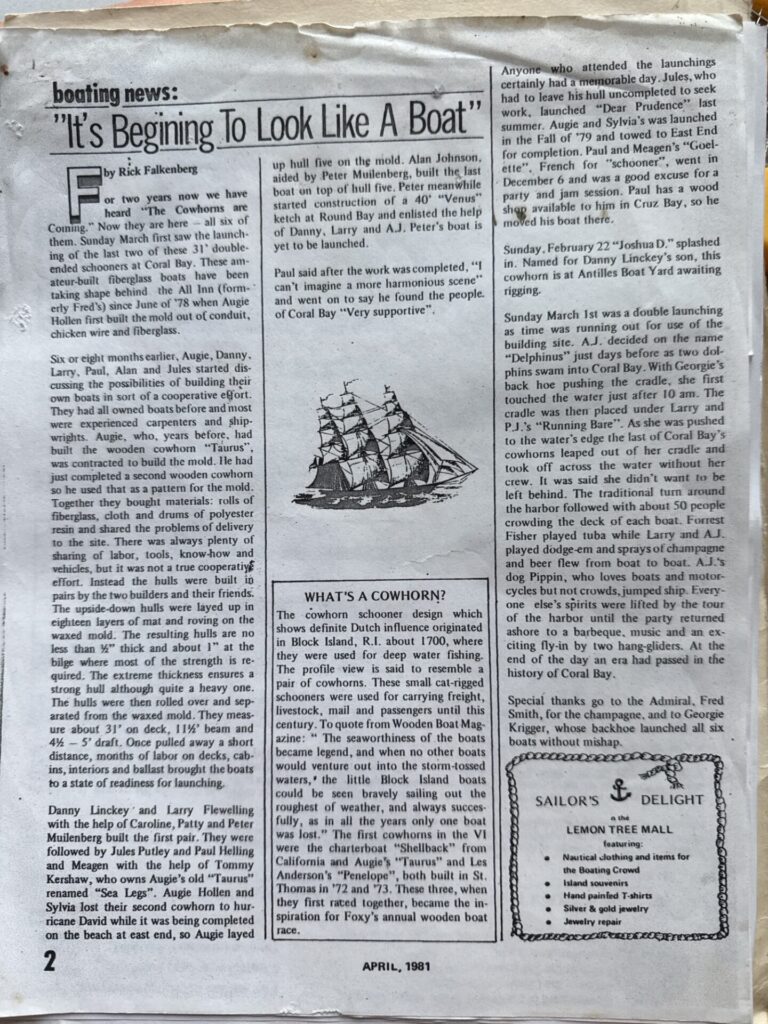
https://www.allatsea.net/old-sailors-never-die/?amp
https://www.allatsea.net/boat-building-in-the-boondocks-part-two/?amp
https://www.allatsea.net/an-unauthorized-memoire-of-augie-hollen/

